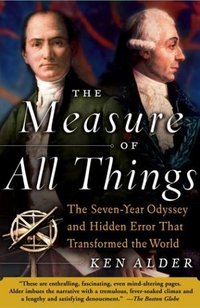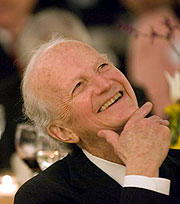The Alfred P. Sloan Professor of Atmospheric Science at MIT analyzes the case for human-induced global warming:
(p. A14) There have been repeated claims that this past year’s hurricane activity was another sign of human-induced climate change. Everything from the heat wave in Paris to heavy snows in Buffalo has been blamed on people burning gasoline to fuel their cars, and coal and natural gas to heat, cool and electrify their homes. Yet how can a barely discernible, one-degree increase in the recorded global mean temperature since the late 19th century possibly gain public acceptance as the source of recent weather catastrophes? And how can it translate into unlikely claims about future catastrophes?
The answer has much to do with misunderstanding the science of climate, plus a willingness to debase climate science into a triangle of alarmism.
. . .
To understand the misconceptions perpetuated about climate science and the climate of intimidation, one needs to grasp some of the complex underlying scientific issues. First, let’s start where there is agreement. The public, press and policy makers have been repeatedly told that three claims have widespread scientific support: Global temperature has risen about a degree since the late 19th century; levels of CO2 in the atmosphere have increased by about 30% over the same period; and CO2 should contribute to future warming. These claims are true. However, what the public fails to grasp is that the claims neither constitute support for alarm nor establish man’s responsibility for the small amount of warming that has occurred. In fact, those who make the most outlandish claims of alarm are actually demonstrating skepticism of the very science they say supports them. It isn’t just that the alarmists are trumpeting model results that we know must be wrong. It is that they are trumpeting catastrophes that couldn’t happen even if the models were right as justifying costly policies to try to prevent global warming.
If the models are correct, global warming reduces the temperature differences between the poles and the equator. When you have less difference in temperature, you have less excitation of extratropical storms, not more. And, in fact, model runs support this conclusion. Alarmists have drawn some support for increased claims of tropical storminess from a casual claim by Sir John Houghton of the U.N.’s Intergovernmental Panel on Climate Change (IPCC) that a warmer world would have more evaporation, with latent heat providing more energy for disturbances. The problem with this is that the ability of evaporation to drive tropical storms relies not only on temperature but humidity as well, and calls for drier, less humid air. Claims for starkly higher temperatures are based upon there being more humidity, not less — hardly a case for more storminess with global warming.
. . .
In Europe, Henk Tennekes was dismissed as research director of the Royal Dutch Meteorological Society after questioning the scientific underpinnings of global warming. Aksel Winn-Nielsen, former director of the U.N.’s World Meteorological Organization, was tarred by Bert Bolin, first head of the IPCC, as a tool of the coal industry for questioning climate alarmism. Respected Italian professors Alfonso Sutera and Antonio Speranza disappeared from the debate in 1991, apparently losing climate-research funding for raising questions.
And then there are the peculiar standards in place in scientific journals for articles submitted by those who raise questions about accepted climate wisdom. At Science and Nature, such papers are commonly refused without review as being without interest. However, even when such papers are published, standards shift. When I, with some colleagues at NASA, attempted to determine how clouds behave under varying temperatures, we discovered what we called an “Iris Effect,” wherein upper-level cirrus clouds contracted with increased temperature, providing a very strong negative climate feedback sufficient to greatly reduce the response to increasing CO2. Normally, criticism of papers appears in the form of letters to the journal to which the original authors can respond immediately. However, in this case (and others) a flurry of hastily prepared papers appeared, claiming errors in our study, with our responses delayed months and longer. The delay permitted our paper to be commonly referred to as “discredited.” Indeed, there is a strange reluctance to actually find out how climate really behaves. In 2003, when the draft of the U.S. National Climate Plan urged a high priority for improving our knowledge of climate sensitivity, the National Research Council instead urged support to look at the impacts of the warming — not whether it would actually happen.
Alarm rather than genuine scientific curiosity, it appears, is essential to maintaining funding. And only the most senior scientists today can stand up against this alarmist gale, and defy the iron triangle of climate scientists, advocates and policymakers.
For the full commentary, see:
RICHARD LINDZEN. “Climate of Fear.” The Wall Street Journal (Weds., April 12, 2006): A14.




 Gary Becker at April 7, 2006 tribute dinner. Source of image: online press release cited below.
Gary Becker at April 7, 2006 tribute dinner. Source of image: online press release cited below.
